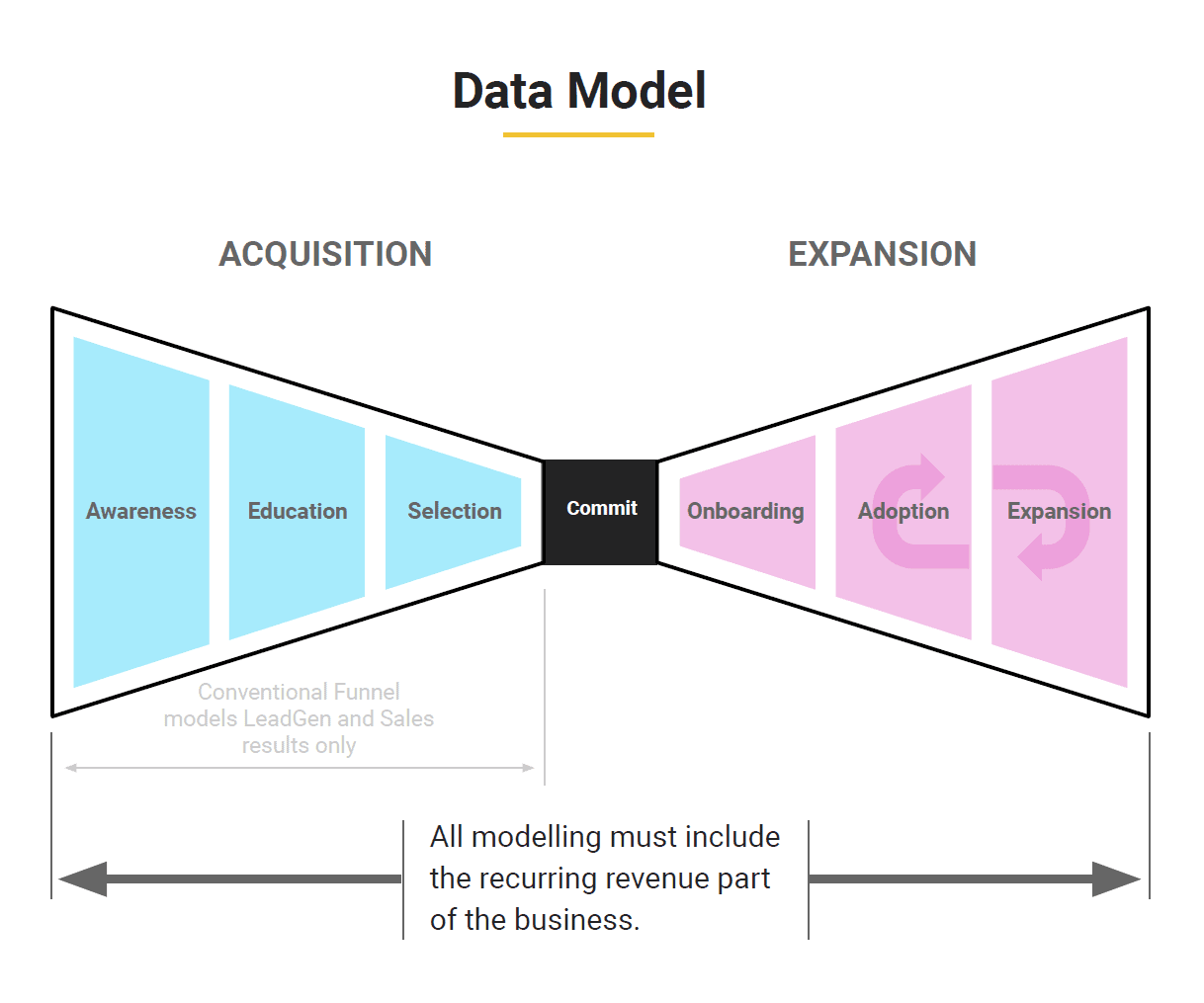Growing a young company is tough in the best of times but doing so during an economic slowdown is fraught with even more challenges. One of the biggest is maintaining sales momentum. With every expense under scrutiny, what’s the best use of marketing dollars; what’s the most desirable mix of prospecting for new customers and increasing volume from existing accounts; and how do you keep your top performers motivated and productive?
These were some of the topics covered in a webinar I hosted with Jacco van der Kooij, founder of Winning by Design, a global agency that helps SaaS companies of all sizes, including DocuSign, Adobe, and UberEats, to design, build, and scale their sales efforts. Jacco brings a somewhat unusual background to sales consultancy. His first jobs were as an engineer with Philips Electronics, where he was program manager for numerous deployments of satellite-based communications systems. When he transitioned into marketing roles, he applied the rigorous, fact-based approach of an engineer to the challenges of maximizing sales and marketing effectiveness.
Our discussion focused on three topics:
- What are some of the key challenges in today’s SaaS sales environment?
- What should the focus be in meeting those challenges?
- What can executives do to help their sales organizations thrive?
Marketing and sales executives from the Norwest portfolio joined the conversation, posing many insightful questions.
Following are highlights and key takeaways from the discussion. You can watch my entire conversation with Jacco at the bottom of this post.
What are some of the key challenges in today’s SaaS sales environment?
(Beginning at 4:00 in the recording)
DG: What are you doing to help your clients respond to the current economy?
JK: Other companies may think this is a downturn, but if you’re in SaaS this is an opportunity. SaaS was born during the post-dotcom crash, grew post-2008, and thrived during the pandemic.
That is primarily because their cost structure is significantly better than that of a conventional company. If you’re a SaaS company in a downturn, you need to embrace this, because it is time to prepare for six months from now, when things will be turning around. The top priority is to train and coach your team to be ready.
But here’s a really important point. There has been a major change in the makeup of sales teams today compared to years past. When I was leading sales teams, most enterprise reps were in the 45 to 55 age group, with 20 years’ experience. If I offered them advice, they’d kick me out.
But today, the bulk of go-to-market employees are 25 to 35 years old. And they seek advice along the lines of “Show us how to do it. How do I navigate to a decision-maker?” That is a very different mindset: people who want to be coached on how to do something, not managed.
DG: You’re spot on. Coaching is critical.
JK: Historically, organizations managed their people on volume metrics: how many deals did you close; how many leads did you generate; how many renewals? Today, we need to shift from managing on metrics to coaching on techniques: “tell me how I do things in real life. Show me an example, like a recording I can listen to.”
“We need to shift from managing on metrics to coaching on techniques.”
Where should the focus be in meeting the challenges of an economic slowdown?
(Beginning at 13:26 in the recording)
DG: A lot of revenue leaders are having conversations right now about cutting marketing expenses. Sales plans for the rest of the year haven’t changed, but your pipeline is degrading. What do you do in this situation?
JK: In good times, you have a tendency to over-hire, and eventually that can result in a lack of performance or lower productivity per person. This is a time to let go of some folks who are not productive. But how do you decide? Historically, people have had a very reactionary mindset: “let go of CS reps, because it’s more important that we keep the growth goal.” Or, “let’s cut our lead campaign; it’s expensive and has not been generating much.”
Now, these ideas may be good or bad; I do not know. What I do know is they need to be calculated. We need to know the impact of each action. If cuts are not being made in the right places, and if investments are not being made in the right parts of the business, then your cuts are doing more damage than good.
“If cuts are not being made in the right places, and if investments are not being made in the right parts of the business, then your cuts are doing more damage than good.”
DG: We often spend more time coaching sub-performers or mediocre performers versus our superstars. If we had the courage to let go of some of those underperformers and focus our coaching efforts more on high performers, wouldn’t we improve our sales efficiency?
JK: When it comes to your superstars, don’t spend time on coaching them, spend time on learning from them. Take the best practices of your superstars and use them to coach the next batch of people, because when you increase their performance, that’s where you’re going to see your gain.
DG: You have a concept that I find very powerful – the bowtie. Would you explain it?
(Beginning at 23:00 on the recording)

JK: Sure. Historically, we all use the marketing and sales funnel, whose goal is to figure out how many leads are converted into wins. That’s the left side of the bowtie. And we spend a lot of time discussing that process: deals closed, sales performance, number of leads, where the leads come from, dollars per lead, etc. Far less time and metrics are spent on revenue expansion, the right side of the bowtie: onboarding, keeping the customer happy, renewals, increased levels of recurring revenue.
We tell clients they need to look at the entire journey. When you’re just starting out, all your effort is going to be on the left side. But as you grow, you must invest in the people and processes appropriate to the righthand side as well. The compound impact of recurring revenues starts to happen in the $15 to $17 million range in annual revenue.
Now, it takes a company about one to two years to prepare for that. That means that when you’ve reached between $5 and $8 million, you need to start preparing for that. If you don’t, you’re going to miss that growth and you’ll continue to have a disproportionate focus on the left side. And if you haven’t made that transition by the time you’ve reached $40 or $50 million, that switch is really hard.
DG: That’s a great insight. Can you give us some real tactical examples of what people can do to drive that right side of the bowtie?
JK: Yes. The first involves a customer we’ll call Jennifer, who’s a champion for your company. But Jennifer is leaving, under good circumstances, for another company. When this occurs, most companies simply keep the account going. But this situation creates two immediate opportunities.
- You need to retrain, re-coach and resell the person replacing Jennifer. Because if you don’t do that, your churn rate will go up significantly.
- Wherever Jennifer goes, you need to alert your sales team immediately so they can call on Jennifer at her new job. You can have your customer success manager call up Jennifer, find out where she’s going and wish her success in her new position.
The second example involves converting monthly contracts to yearly or multi-year contracts. It’s very common that a new customer will not want to sign up for a one-year contract until they have some experience with the product. Fair enough. But maybe that was six, seven, eight months ago, and they now have grown attached to your service. So, go to those customers right now and ask if they are ready today to renew on a two- or three-year contract.
Why now? Because many companies are warning of budget cuts in 2023. So, there’s an opportunity for them to lock in your service on a multi-year contract – and a discount – which can be very attractive to them. In some cases, they may even say, “Help me spend my budget right now; otherwise I lose it.”
What can executives do to help their sales organizations thrive?
(Beginning at 35:43 in the recording)
DG: How can sales leaders make the business case for investing in people to create growth?
JK: This is where the engineer in me comes to the forefront. Because you actually can calculate the impact of hiring decisions. We call it the Growth Formula, and we do it for clients all the time.
Remember the bowtie – new-business development on the left, and growth from current customers on the right? Well, you can calculate the impact of, say, adding a person on the left – where the metrics include MQLs, SQLs, win rate, and ASP – and adding a person on the right, where the metrics are things like retention rate, expansion rate, ARR by year, etc.
Using the Growth Formula, you can calculate that adding a person on the left could produce a one-time revenue gain of, say, $18,000; while adding a person on the right might increase the five-year value of that customer from, say, $300,000 to $450,000.
When you use real numbers from your own business, you then have a factual basis on which to decide between adding a hunter or adding a farmer to your sales organization.
DG: This is one of the big takeaways for me: having a fact-based discussion based on a model with relatively standardized metrics. You also have valuable advice about sales compensation.
JK: You first have to understand that it’s a misconception that quotas and variable compensation drive behavior. If variable comp plans were that influential in driving people’s behavior, we would see a lot higher performance. A comp plan works really well to get something done this month, but it only works once. Because if you remove that variable comp, then suddenly the behavior starts focusing on other things. Sales professionals are motivated by money, yes, but it’s not the only thing. The primary reason a salesperson is motivated is recognition.
“It’s a misconception that quotas and variable compensation drive behavior.”
You need to do two things with your sales leaders.
- You need to listen to them and ask what you can do to help. Because if you are in a downturn, they know where to find the money.
- You need to make sure they are recognized for having done something special. If you do not do that, they’re going to fall back on comp, they’re going to see that the comp is low, and they’ll be demotivated.
DG: How about retention bonuses for high performers; thumbs up or thumbs down?
JK: I’d say thumbs up, but only for core employees. There are two kinds: those you don’t want to leave or even consider leaving, and those who have told you they are leaving and you need to hold them. For the latter, pay them whatever you need to keep them – and immediately start hiring their replacement. For those who don’t bring it up, proactively reach out to a core group of essential people with a plan that tells them, “Don’t worry, we’ve got you covered.”
There’s also a lot you can do without a bonus – including them in strategy, for example, or giving them access to important data.
DG: In an early-stage company, is it best to start out with no comp plans?
JK: With an early-stage company, you’re not hiring sales performance against quota, you’re hiring business-development people. Your first two go-to-market reps are folks who care so much about the business and the customer. You may give them a variable comp such as 10% of sales, just to make them feel like they’re in a sales role, but you’re not hiring on that behavior.
You’re hiring because they know two things really well.
- They are intimately involved with the problem that you’re solving; they see it, they’ve been part of it.
- They understand the solution very well. If I’m the founder, I don’t just want to train that person, I want them to have my 20 years of experience in their brain.
DG: Any final thoughts?
JK: We now have the data and the science available to make decisions based on causality and not correlation. People are just yelling “Try this, try that!” I say no, show me the data. Show me the calculation.
So, create a growth formula for your business and use it to make these important decisions.





